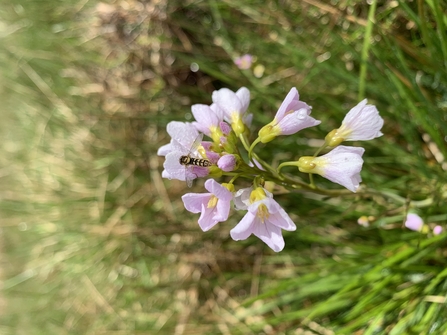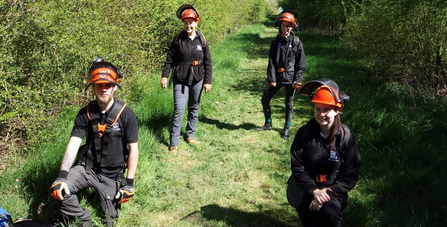Spring is probably the busiest season of the year for wildlife. This means that as conservationists we definitely have a lot of work to do! Something that has particularly interested me during my time as a trainee is meadow management.
When I first started volunteering for the Trust as an Outdoor Origins youth group member, I was introduced to sweep netting. I was fascinated by it! You can catch so many different invertebrates in such a small area, helping to paint a great picture of the diversity of species within a meadow or grassy area of habitat.



